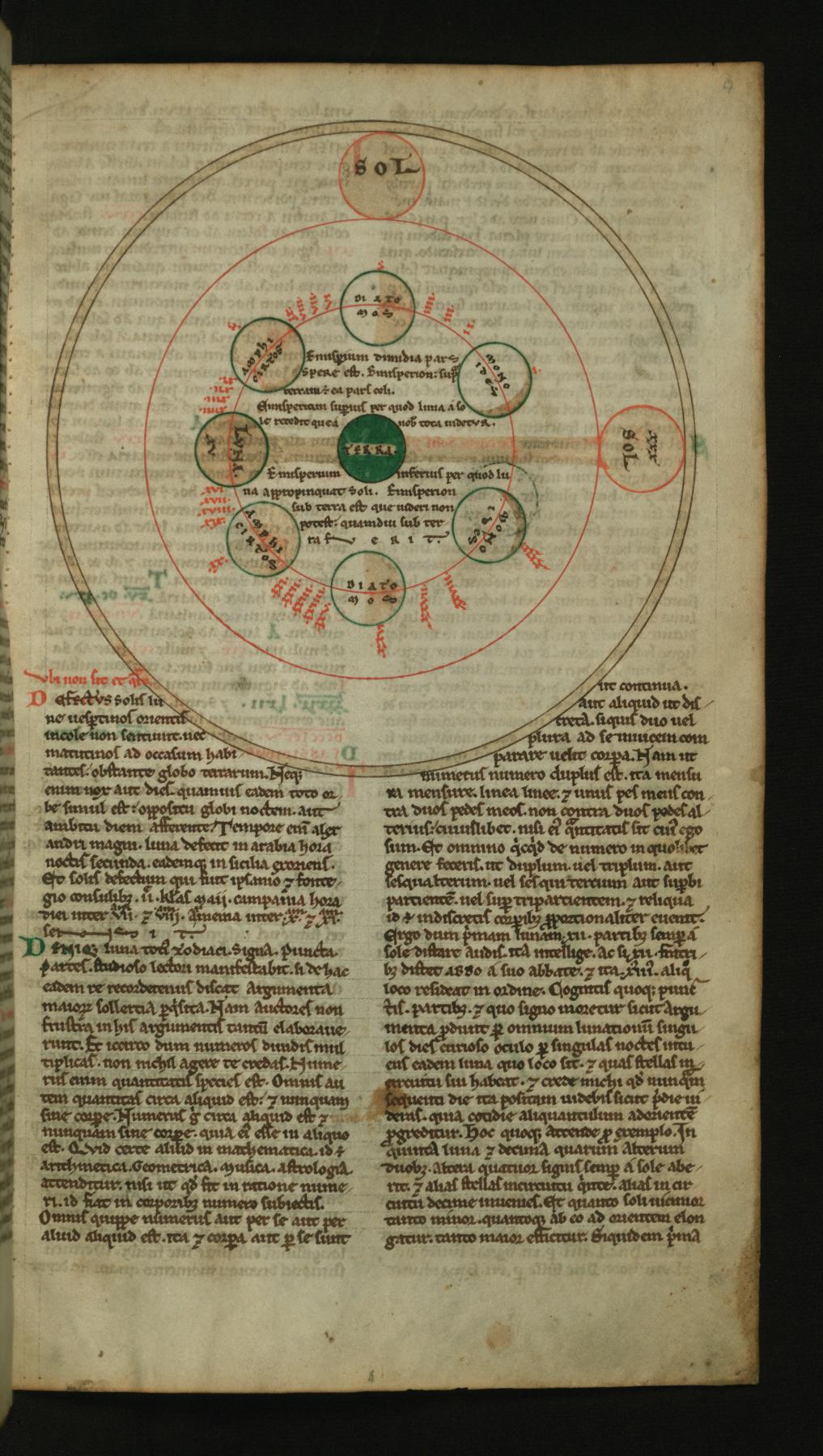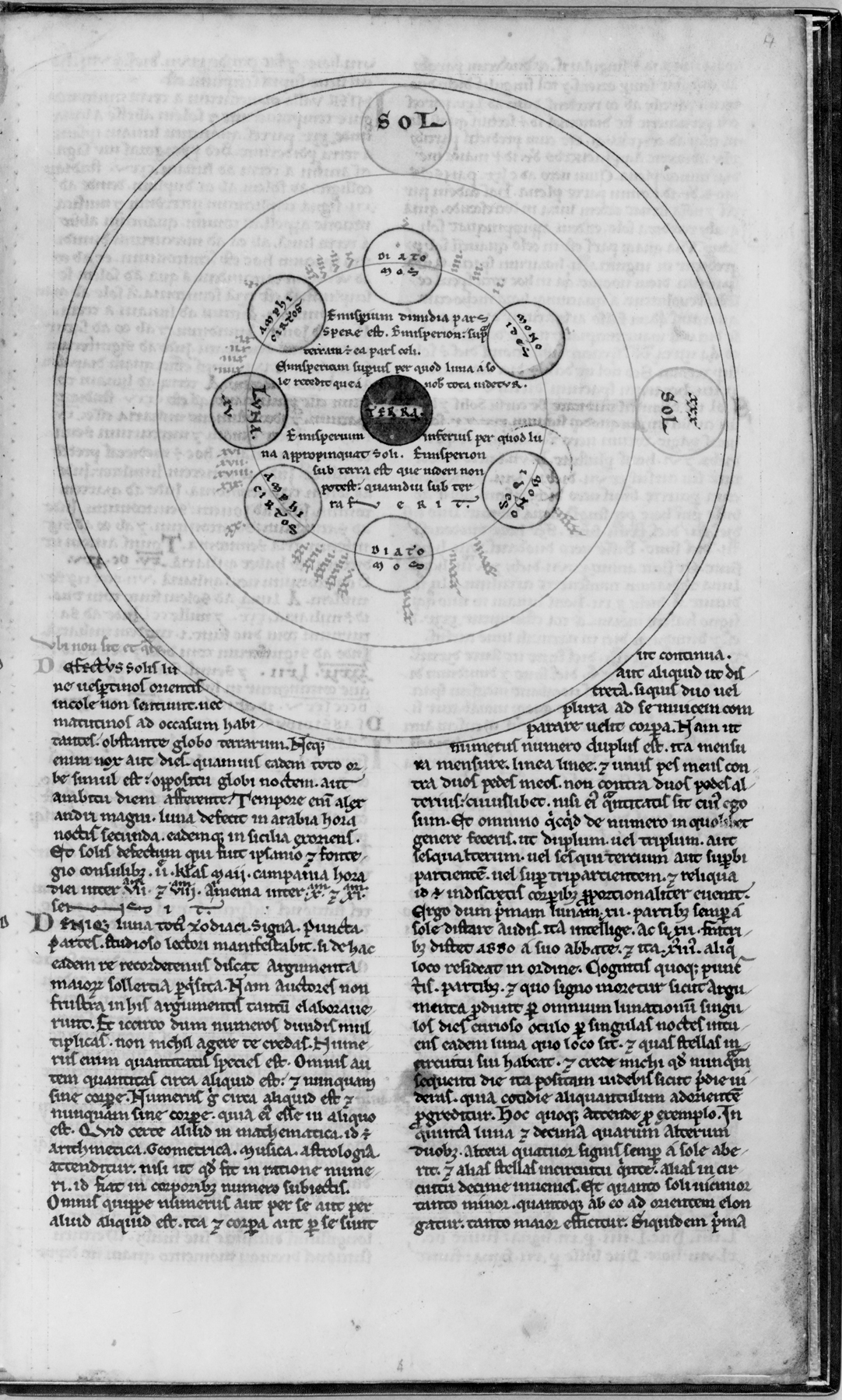Diagram of the Phases of the Moon
(Manuscripts and Rare Books)
This diagram illustrates the Moon's phases in relation to its distance from the Sun. The Earth at center is surrounded by three concentric rings. Along the inner ring are seven discs showing the phases of the waxing and waning moon, indicated by pale yellow wash emanating from the Sun, at right. As the diagram makes clear, and as medieval authorities recognized, the Moon's phases are determined by the extent of its illumination by the Sun. The cycle begins with the new, crescent Moon at upper right (approximately 2 o'clock) and moves counterclockwise, with the days of the lunar cycle given in red. It ends when the Moon is not visible -- that is, when it lies directly between the Earth and Sun, the latter labeled "Sol XXX."
Provenance
Provenance (from the French provenir, 'to come from/forth') is the chronology of the ownership, custody, or location of a historical object. Learn more about provenance at the Walters.
Gruel and Englemann Collection, Paris [1]; acquired by Henry Walters, Baltimore, 1903; by bequest to Walters Art Museum, 1931.
[1] no. 131, bookplate on inside upper board
Geographies
United Kingdom, England (Place of Origin)
Measurements
H: 10 1/2 × W: 6 1/8 in. (26.7 × 15.5 cm)
Credit Line
Acquired by Henry Walters, 1903
Location in Museum
Not on view
Accession Number
In libraries, galleries, museums, and archives, an accession number is a unique identifier assigned to each object in the collection.
In libraries, galleries, museums, and archives, an accession number is a unique identifier assigned to each object in the collection.
W.73.4R





